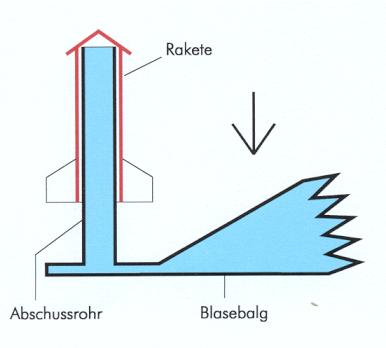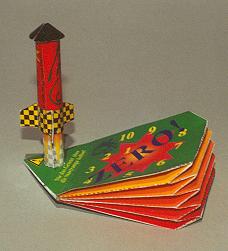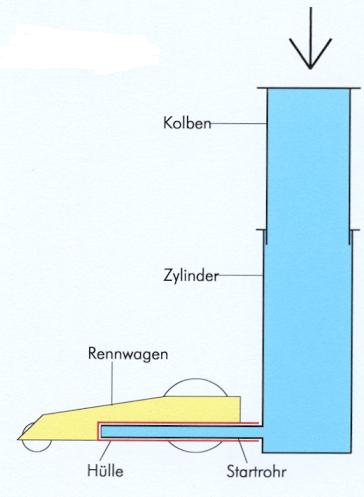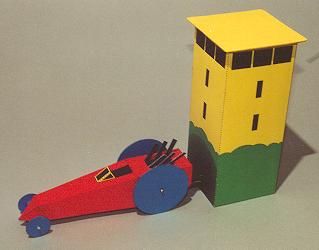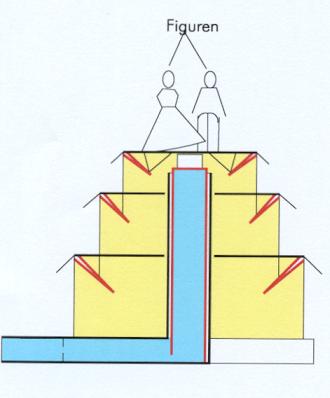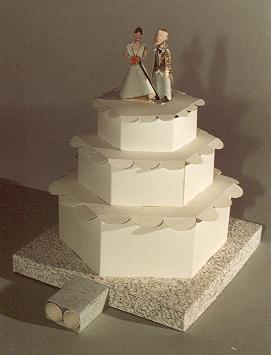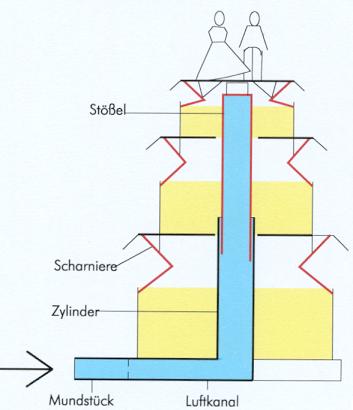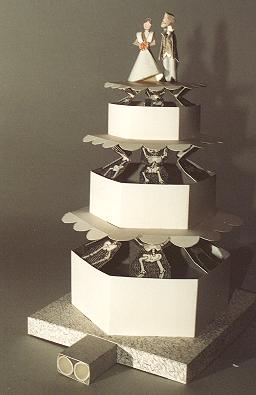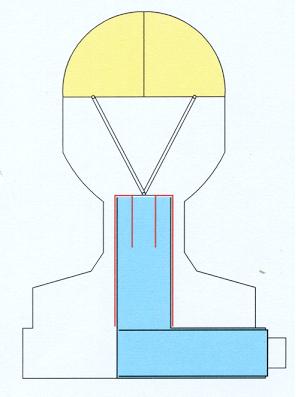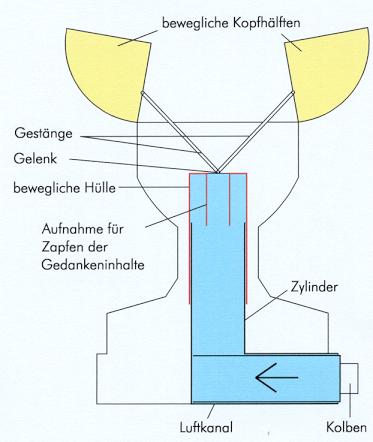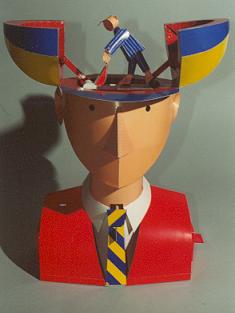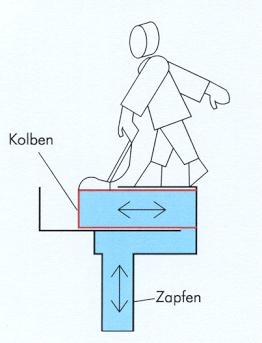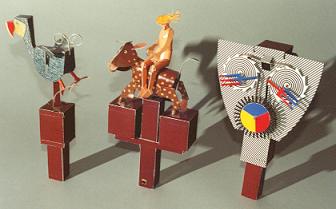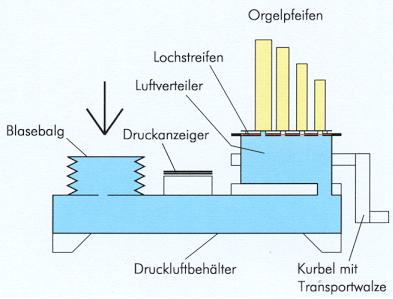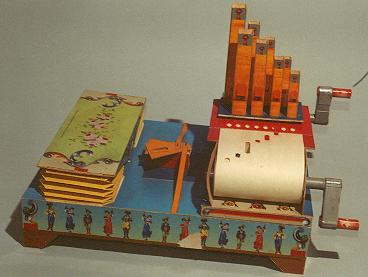2.1 Rocket
In the model of the Phantasia-Verlag in Wyk/Föhr (Germany) a small rocket is launched by compressed air. The compressed air is produced by the rapid compression of a bellows. The components of this model are: bellows, launching tube and flying object. The long launching tube ensures a good guiding, and the loss of pressure is minimized. Demands of the assembly: Folding and gluing of the bellows is fiddly, leaking patches could cause a fall in pressure. Launching tube and rocket must be rounded well, otherwise there's a problem of jamming.
